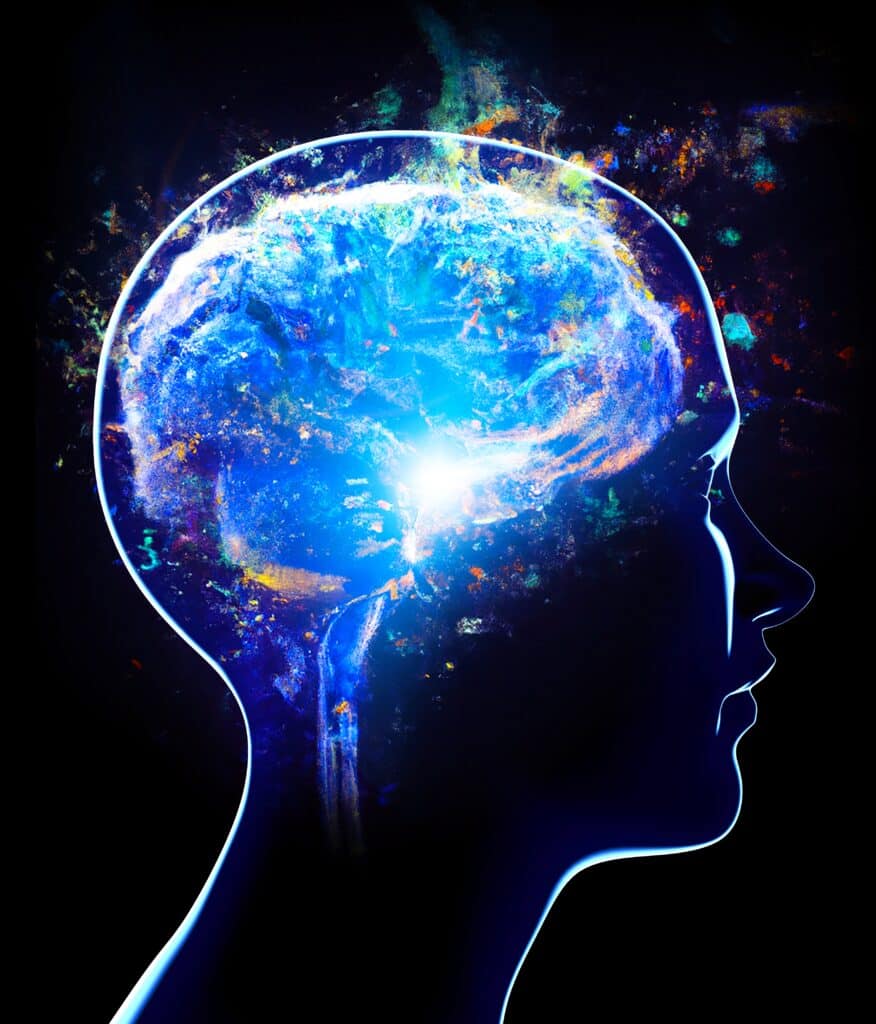
The Colorado river toad (Incilius alvarius) secretes 5-methoxy-N,N-dimethyltryptamine (5-MeO-DMT)1,2, a member of the class of psychoactive tryptamines that includes N,N-dimethyltryptamine (DMT), one of the main active components of ayahuasca.3 Structurally and functionally, 5-MeO-DMT and DMT are closely related, and may act as regulators of inflammation and neurogenesis through both 5-hydroxytryptamine receptors (5-HTRs) and sigma-1 receptors (SIG-1Rs).4,5 The use of these drugs is spreading from their traditional roots in South America to other nations,6 likely motivated by their links to potential improvements in cognition and potent antidepressant effects.7,8
Legal restrictions on such research, as well as a deficiency of suitable experimental models, contribute to our limited understanding of the physiological activity of dimethyltryptamines and other traditional psychoactive substances.9,10 However, significant progress over the past few years has been made in differentiating stem cells (the process of stimulating “blank” cells to have a specific function), into mature neurons and cerebral organoids.11
Cerebral organoids are made up of various cell types in a complex three-dimensional (3D) configuration that can self-organise into anatomically distinct brain regions, including the cerebral cortex, ventral forebrain, and hippocampus.12 The potential to model higher-order functions of the human brain, such as cellular interactions and neural circuit dysfunctions, particularly those relating to plasticity and growth, may be recapitulated by cerebral organoids.13,14
Detecting changes in the amount of protein made (or not made) by cells following 5-MeO-DMT treatment using techniques such as protein mass spectrometry (which analyses protein sequences and their abundance) can tell you how these cells are likely behaving. Thus, to understand the biochemical pathways that 5-MeO-DMT activate or deactivate, an investigation combining 5-MeO-DMT, cerebral organoids, and protein mass spectrometry was conducted.15
Main findings
Characterising organoids
Initially, cells cultured as a 2D monolayer (i.e., a flat surface) showed no change in cell differentiation status, growth, or death when treated with 5-MeO-DMT, likely due to the low or absent expression of the receptors on the cell surface that detect the compound. However, when cultured as a 3D cerebral organoid, cells that express the 5-HT2A, 5-HT2C, and SIG-1 receptors were identified. Accordingly, the use of cerebral organoids was deemed a suitable model for investigating the effects of 5-MeO-DMT.
Detangling the psychedelic proteome
Due to the complexity of organoid systems, an unbiased (i.e., non-hypothesis driven) approach using protein mass spectrometry analysis to look for changes in the expression of proteins in response to 5-MeO-DMT was utilised.
Proteins are produced by cells and are essential to how the cells function. For example they can tell cells to move, divide, or communicate with other cells. Proteins are 3D structures built up of smaller building blocks and come in thousands of shapes and sizes. Mass spectrometry can look at small fragments of proteins, determine their size, and compare them to a library to identify what protein they belong to. Additionally, the method can also calculate how many fragments there are, which is useful in deciphering what biological processes are happening within a cell.
This study identified a total of 6,728 different proteins. By comparing the 5-MeO-DMT against cerebral organoids which were not treated with the compound, the expression of 934 proteins changed: 360 of those were downregulated, whereas 574 were upregulated.
As this type of analysis does not directly look at the behaviour of the cells, the changes in protein expression are used as a proxy to provide an insight into the biological processes occurring. From the proteomic analysis, cellular processes typically associated with cell growth and differentiation were predicted to be activated, whereas biological processes including cell death and neurodegeneration were predicted to be inhibited. A protein called NF-κB, known for turning on genes involved in inflammation, was also found to be downregulated in response to 5-MeO-DMT.
Two neurons communicate via a connection called a synapse. This connection varies in strength, but it can be reinforced through a process called long-term potentiation (LTP). In response to 5-MeO-DMT, a host of proteins involved in LTP were upregulated.
Another protein found to be significantly downregulated following 5-MeO-DMT treatment included metabotropic glutamate receptor 5 (mGluR5). This receptor has been implicated in some facets of addictive behaviour, such as drug seeking and reinforcement (i.e., strengthening the association between taking of the drug with pleasure).16 Accordingly, previous work found mice lacking the gene encoding mGluR5 do not self-administer cocaine when prompted.17 Thus, the therapeutic benefits of structurally similar psychoactive tryptamines regarding substance dependence may be acting on the regulation of mGluR5.
Study limitations
Although highly informative of the molecular mechanisms that are likely activated and/or deactivated following 5-MeO-DMT treatment, there are some drawbacks of the study. Firstly, this was wholly an in vitro study which makes generalising to cells in the human brain difficult, especially with the high concentration of the drug used here. Using such concentrations risks inducing biological pathways, which, under typical real-life conditions, would not occur. As the proteins were extracted in bulk from the organoids, it is unclear what specific pathways are activated.
Additionally, experiments to inactivate individual receptors that 5-MeO-DMT is known to activate (whilst leaving other receptors functional) were not carried out. Such experiments would provide more information to make stronger inferences of the specific mechanisms of action of 5-MeO-DMT.
Conclusions
These findings demonstrate that investigating the effects of 5-MeO-DMT in vitro requires innovative cell culture conditions. Stimulating cerebral organoids with 5-MeO-DMT elucidates proteins involved in biological pathways which include neurodegeneration, cell death, strengthening of synaptic connections, anti-inflammation, and addiction behaviour. In summary, this insightful study stimulates the exploration of precise biological pathways in future psychedelic research.